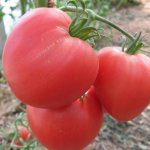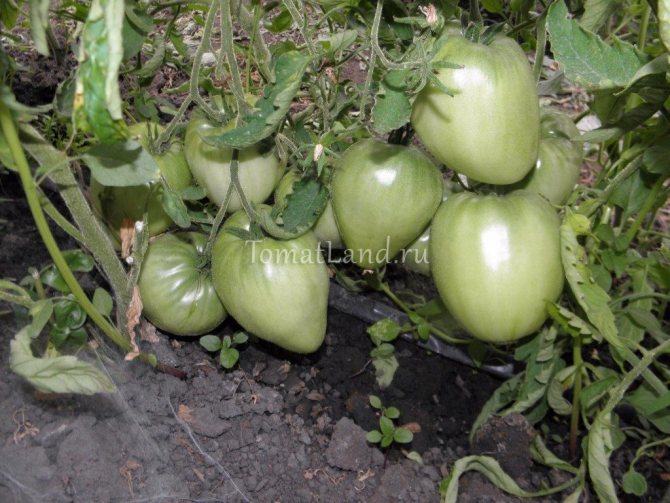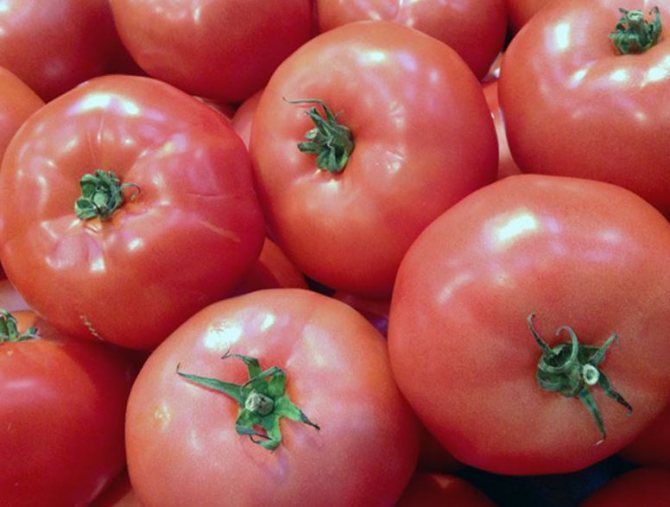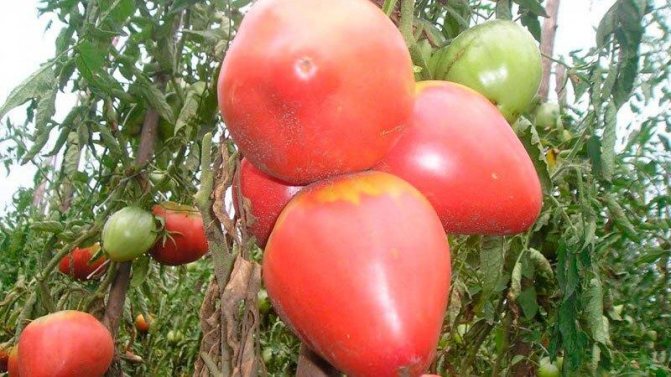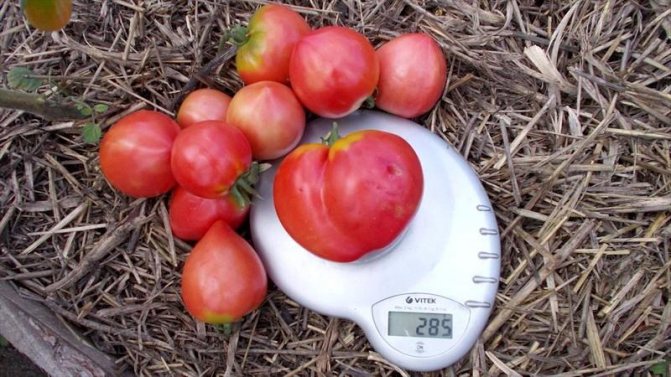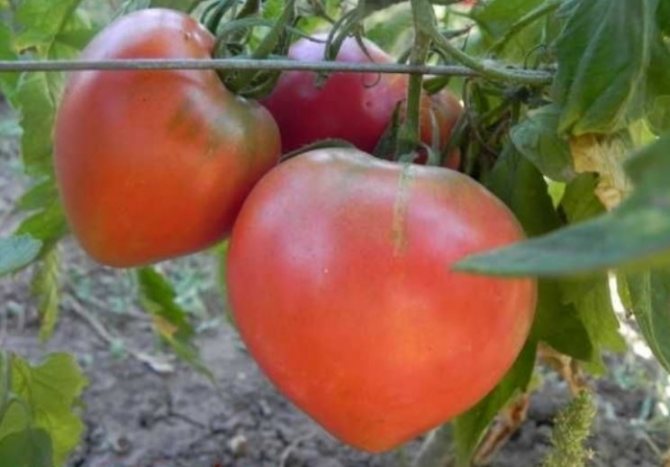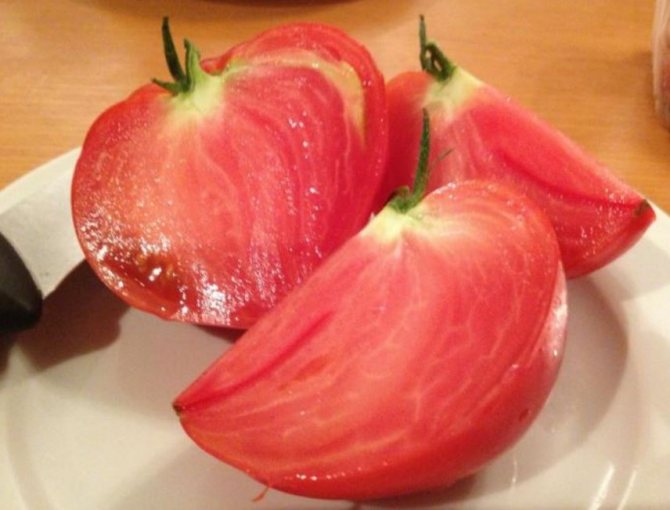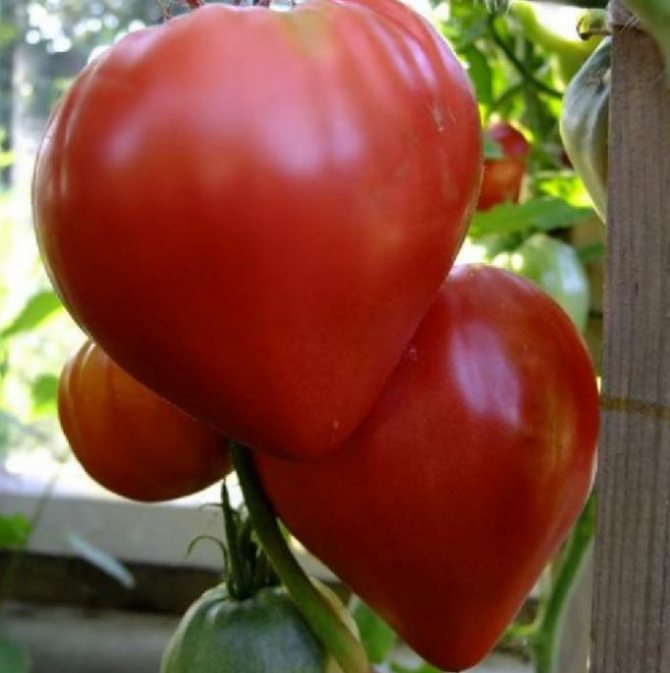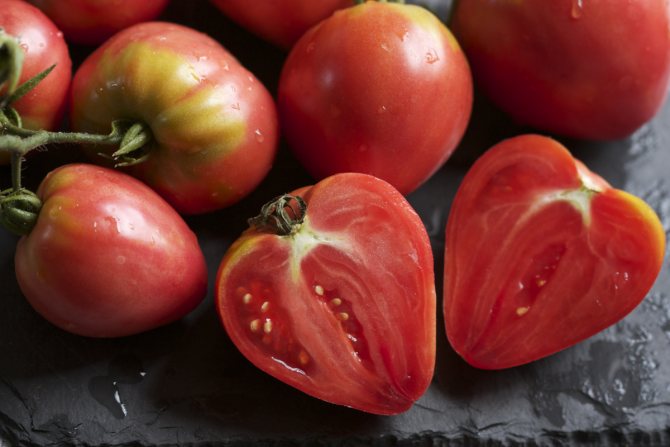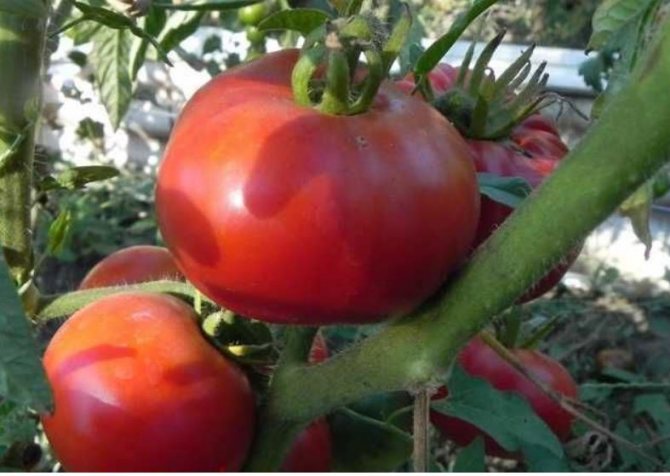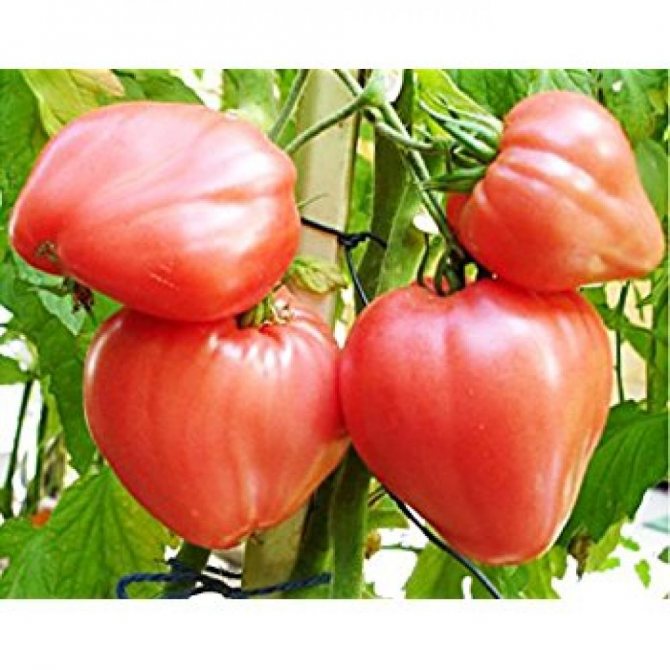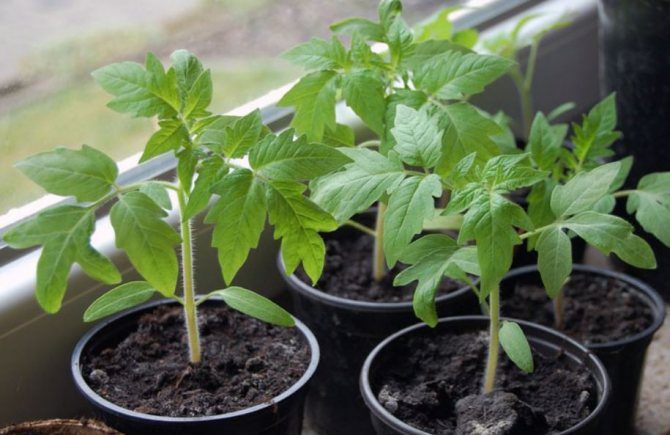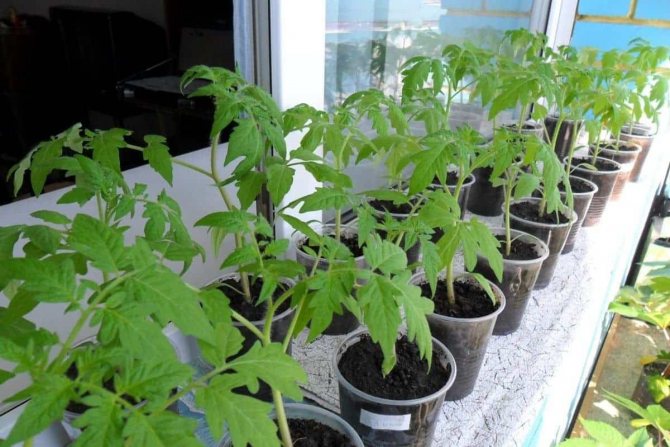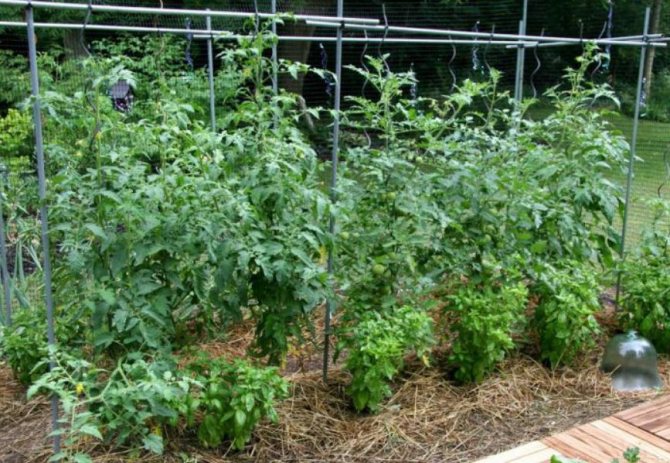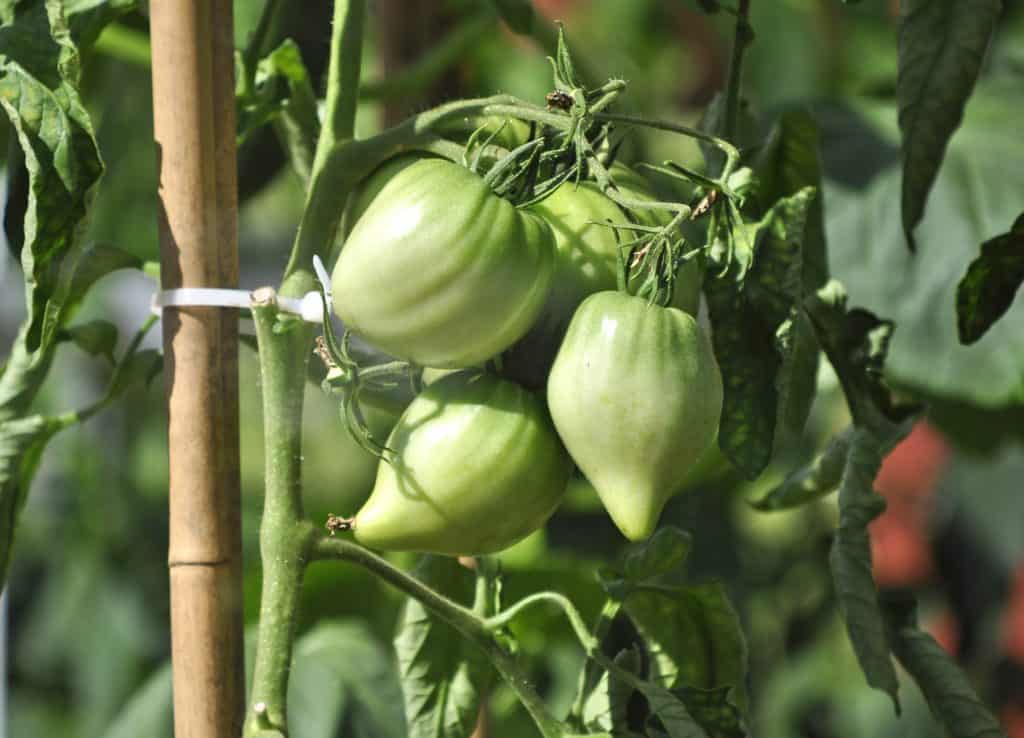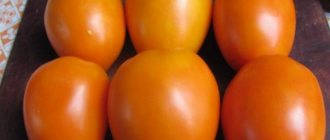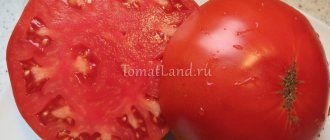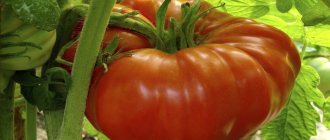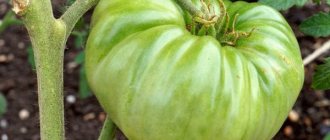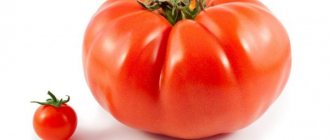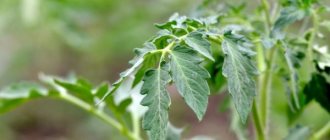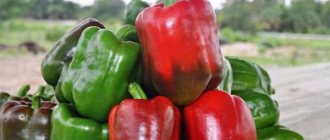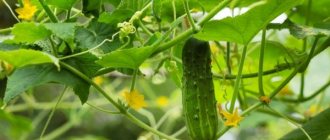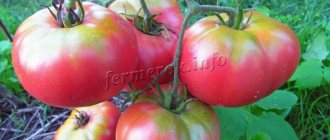Characteristics and description of the "Volovye Heart" tomato variety: photo, video + reviews
This type of tomato won me over with its size and taste. Despite the fact that the bush is not miniature at all, I still plant the Volovye Heart annually in my garden. In a perennial competition with novelties and permanent varieties that are also present on the site, this tomato is always among the winners.
These tomatoes are delicious both fresh and in sauces, lecho, adjika. A rather unpretentious variety, however, it still needs care and attention, adherence to the rules of agricultural technology when planting. We will talk about this today.
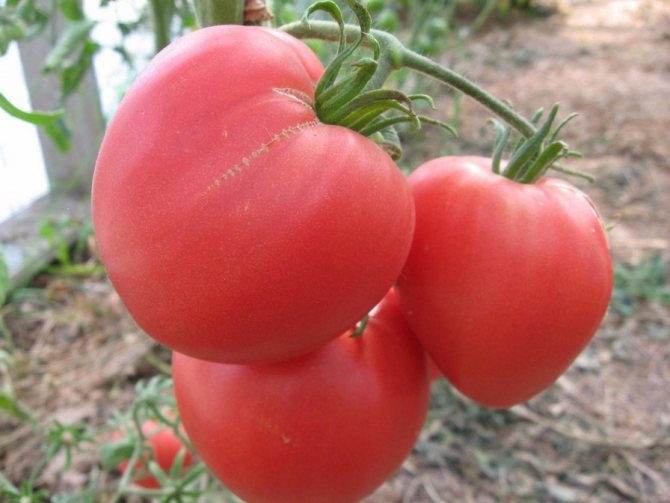
general characteristics
The origin of the variety is Italian. And in Russia it was bred by breeders from Agrofirma Poisk LLC. In 2003, Volovye Heart was entered into the register of the Russian Federation and approved for use.
It has several hybrid analogs F1, which differ in the shade of the fruit, they can be pink, raspberry and even black.
- A characteristic feature of the variety is the different size of the fruits on one branch. They are almost all irregular in shape, but the taste of the tomato is sweet.
- The visiting card of a vegetable can be called a heart-shaped shape in most tomatoes.
- Cow's heart is a mid-season determinant variety. The first crop is harvested 107 - 115 days after planting in open soil. It is recommended to grow it both in the open field and in different types of greenhouses.
- The height of the bush can reach 1.2 - 1.3 m. Therefore, it is imperative to tie it up. Also, the tomato needs to form a bush in 1 - 2 stems, and the second stem is formed from the stepson, which is located above the first brush. All other stepsons are recommended to be deleted.
- An adult bush does not have a too dense green crown; it does not need thinning. There are usually 5 - 6 fruits on one cluster, each with an average of 250 - 400 grams or more. There are cases that one tomato weighed 800 - 1000 grams, if all the rules of cultivation and care are followed.
- The bush is quite sprawling and stops growing after 5 - 6 brushes are formed along with the fruits. Stems are long (one 1.5 - 1.8 m). The first ovary usually appears above 8 - 10 leaves, and the next after 1 - 3 leaves. The largest fruits usually ripen in the lower part of the plant, and the smaller ones - 100 - 150 grams at the tops.
- Tomatoes have high taste characteristics, the skin is thin, sweet and juicy, the flesh is fleshy, the ribbing is medium, the aroma is typical for tomatoes. The amount of dry matter is 4.7%, sugar is 2.2%.
- It is not recommended to grow too much, as it is poorly stored, it is recommended for fresh consumption and for making sauces, ketchup, juices. Almost 700 ml of juice can be obtained from one bush.
- The variety is resistant to most infections and diseases, frost-resistant.
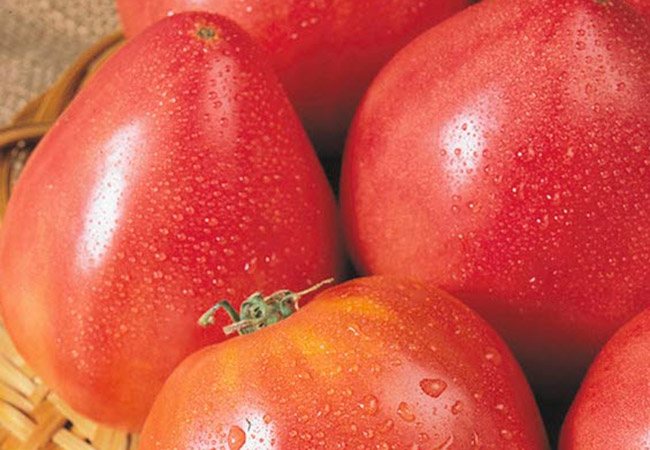

Advantages and disadvantages, differences from other varieties
The opinions of gardeners about the Volovye Heart tomato do not always coincide. With all the external beauty of the fruit, many believe that their taste is far from ideal. Among the obvious advantages of the variety, the following are most often noted:
- excellent presentation of fruits;
- good yield;
- the ability to harvest seeds from your own garden (this is not a hybrid);
- good resistance to most diseases, including late blight;
- fleshy structure of the fruit, allowing cutting for salads and table decoration.
Few of the popular varieties have so many disadvantages, some of which are, of course, insignificant. Usually they talk about the following:
- capricious care, the need to form a bush strictly according to the rules;
- late ripening of fruits, which makes it difficult to use the variety in cold regions;
- poor preservation of the crop;
- unsuitability for whole-fruit canning;
- insufficiently high taste, even tasters assessed only as good.
In recent years, gardeners have been spoiled by an abundance of varieties and hybrids of tomatoes, among which there are fruit-bearing tomatoes of excellent taste. There are many varieties similar to this one.
In the understanding of many people, the bull and the ox are one animal, therefore they believe that the Oxheart and the well-known variety Oxheart are one and the same.
This is not at all the case, although the varieties are similar. The bull's heart has larger fruits and a slightly different color, the “founder” of the variety is closer to red, although there are also varieties of the bull's heart with different fruit colors. Even in the State Register, 10 varieties are registered with the name Bull Heart and a term characterizing the color: from pink to black.
In addition to these, a huge number of heart-shaped tomatoes with high characteristics were obtained. So, the Noble variety is beautiful with very similar raspberry-colored fruits. Their taste is excellent and the variety is very cold-resistant. The Siberian variety Batianya has very similar fruits, but their taste is only good, and the yield is low, but the variety is not afraid of cold weather.
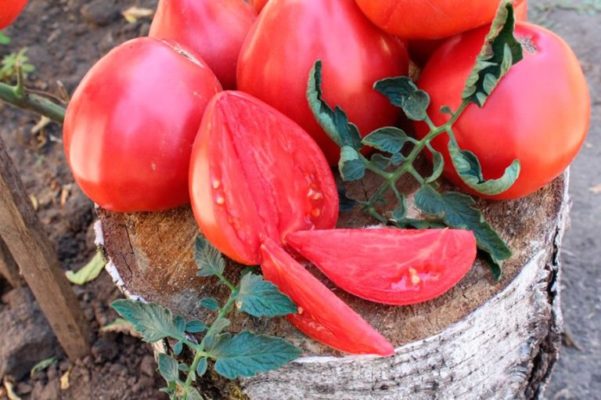

Variety Noble is a good competitor of the Volovyi heart
Thus, there is always a choice, depending on the wishes of the gardener, and it must be admitted that the Volovye Heart tomato has many advantages, but, of course, it is not unique among similar varieties.
Landing technology
There is nothing particularly complicated, you just need to adhere to certain rules recommended for growing tomatoes. Even a novice vegetable grower can handle agrotechnical techniques.
Growing seedlings
You need to start the procedure in late February - early March. Before sowing seeds in the ground, soak them overnight in a weak solution of potassium permanganate. Prepare containers, soil and lids in advance to cover the planted material.
- Make the soil from garden soil, add wood ash and a small amount of bird droppings in equal parts. The soil must be loose, light and nutritious.
- In order for the seeds to hatch faster, they must be carefully laid out on a damp cloth at some distance from each other. Cover the top with a loose layer of fabric, close the lid loosely and remove to a dark and warm place. Remember to ventilate regularly. After a few days, the seeds will hatch.
- Transfer them to a container. Moisten the soil well, tamp down a little and place the seeds with tweezers. Sprinkle with fertile soil on top. The layer thickness should be about 1 cm.
- Cover the container with plastic wrap and place in a warm place. The air temperature should be + 23 - 24 degrees Celsius. If the room is cold, the seedlings will stop growing. Make sure that no condensation forms on the film. If you notice droplets, then remove the film and air. But it is also impossible to overdry the soil. Tomatoes love moisture, so water in moderation.
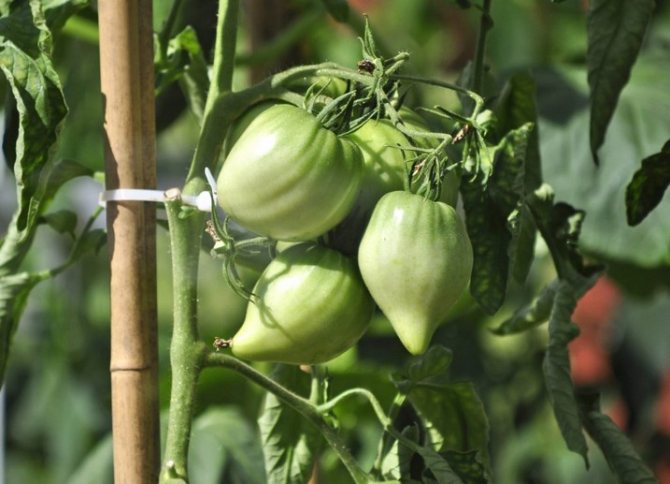

How to buy ready-made seedlings correctly
Sometimes there is simply no time or opportunity to engage in seed germination, but seedlings are needed. You can buy ready-made, but you should learn to figure out which sprouts are really good quality, and then turn into healthy and strong plants.
- The stem should not be too fleshy and thick, like a pencil.When the seedlings look too tall, with a lot of leaves, then they were well fed with nitrogen before selling. The green mass will develop well, but the fruits will be too small.
- There should be only 8-10 leaves on the stem, all of them are green, fresh and healthy. Do not buy seedlings with yellow leaves, because they may no longer develop properly.
- There must be a flower brush on each sprout. But if there are ovaries and fruits, then it is not worth purchasing, since they are unlikely to ripen, the bush will still need to take root in a new place.
- You do not need to buy seedlings that grow very closely in a container. Transplanting can damage the root system and lose plants.
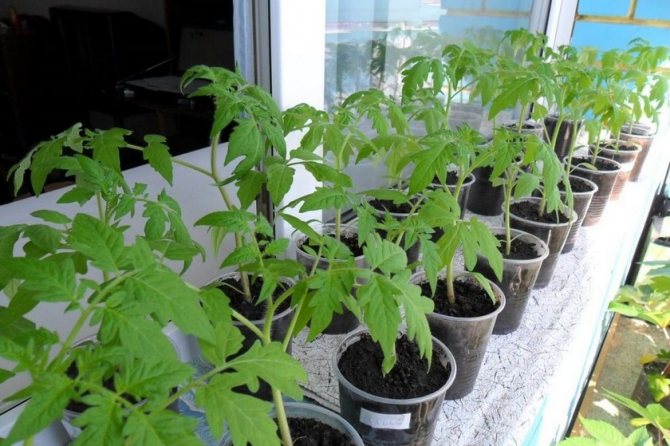

Diving and feeding
When there are at least 2 adult leaves on each stem, they need to be planted in separate containers. Within a few months, the dived seedlings will develop further.
- It is very important that young plants get enough sun and warmth. The temperature in the room should be +23 - 24 degrees during the daytime, and at least +18 at night.
- If there is a lack of light, arrange additional lighting with fluorescent or incandescent lamps.
Read also: Charlie grapes: cultivation, varietal characteristics, description and reviews
Landing in open ground
If you plan to grow a cow's heart in a greenhouse, then the seedlings do not need to be pre-hardened. And before planting in open ground, young plants are gradually accustomed to fresh air. First, you should take out the containers for just a few hours, then increase the time to a whole day, you can expose the bushes for a short while under the sun.
- Plant in the second half of May or early June, when the heat is finally established and there will be no residual night frosts. Seedlings at that time should be at least 60 - 65 days old, adult leaves at least 6 - 7 pieces.
- Clear the area from debris and weeds, dig up and apply mineral fertilizers and humus. It is advisable to do this in the fall. Bushes are planted in a heated greenhouse in April, if the greenhouse is not heated, then in early May.
- Since the plant is large, the gap between the plants should be 50x70 cm. No more than 4 bushes should be planted per 1 m2. The root system and the aboveground part need space and air.
- If the region is cold, then the planting depth should be at least 20 - 25 cm. Add a weak solution of bird droppings or mullein to each planting hole.
- If the seedlings are stretched out, then you can plant a little at an angle. In this way, additional roots are formed, which will give the plant additional nutrition.
It is advisable to tie up the bushes early, even if they are small. It is important to give the right direction to the plant. The leaves of this variety, including the lower ones, do not need to be removed.
Watering should be done as the soil dries, but remember that tomatoes are very fond of moisture. Be sure to loosen the soil and remove weeds. Inspect the plants regularly to keep out pests.
Apply fertilizers, before flowering and fruit setting, potassium-phosphorus and a little nitrogen. Also, this variety needs boric acid treatment: before the flower clusters appear, and then after 10 days.
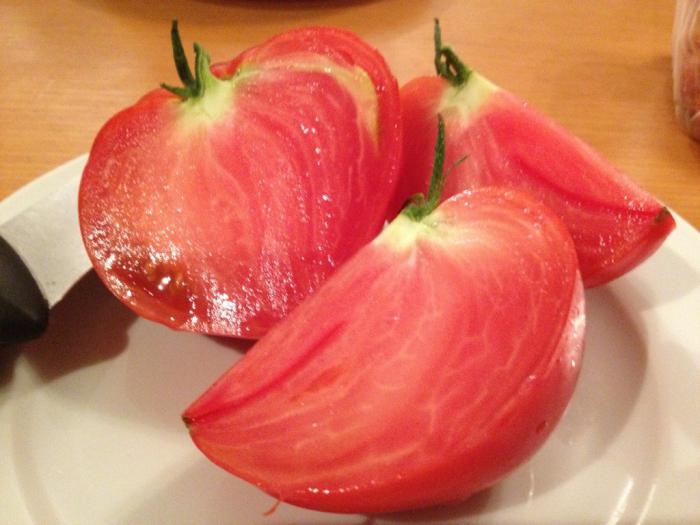

Tomato planting care
Caring for planted plants include:
- watering, on demand;
- weeding if weeds appear;
- loosening the soil;
- fertilizer;
- destruction of pests.
It is necessary to loosen the soil so that weeds do not grow and the soil receives air. Fertilize with mullein solutions, specially prepared bird droppings, or chemical preparations.
Chemicals include potassium permanganate, boric acid and complete mineral fertilizers. Cow's Heart is a tomato that requires foliar feeding with boric acid. The first time you need to process the plant before the flower brushes appear.The solution can be sprayed again after 10 days. Boric acid not only feeds the Volovye Heart seedlings, but also protects them from late blight and small pests.
Features of processing and watering
Treat with chemicals, like watering, preferably in calm weather and in the evening. This must be done so that the soil does not dry out immediately, and fertilizer drops do not create a lens effect on the leaves. After watering, the soil must be loosened to remove the crust and access air. As the plant grows, its subsequent garter is carried out. And fertilize, as needed, controlling the appearance of the tomatoes.
Usually the second feeding is carried out with potassium permanganate or iodine solution. If yellowing of the leaves is suddenly detected, they curl and fall off, which means that there is not enough boron in the soil. Then you can carry out secondary feeding with boric acid. When working with chemical solutions, you must wear:
- respirators, gauze or special - industrial;
- latex gloves;
- aprons made of tarpaulin, polyethylene or rubber;
- goggles are required to protect the eyes.
By fulfilling all safety requirements, you can be sure that feeding will be beneficial without harming you yourself.
Characteristics and description of the "Volovye heart" tomato, reviews
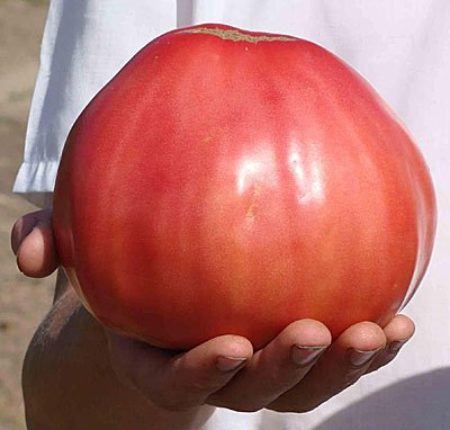

There are vegetable growers for whom the new planting season is associated exclusively with new experiments, and there are those who plant the same varieties on their site from year to year. Today's article will come in handy for both categories. Volovye Heart tomatoes are a classic, but breeders do not stop and continue to breed its subspecies.
Harvesting and storage
Tomatoes of this variety are distinguished by their excellent presentation. Their skin does not crack, they tolerate transportation well over any distance.
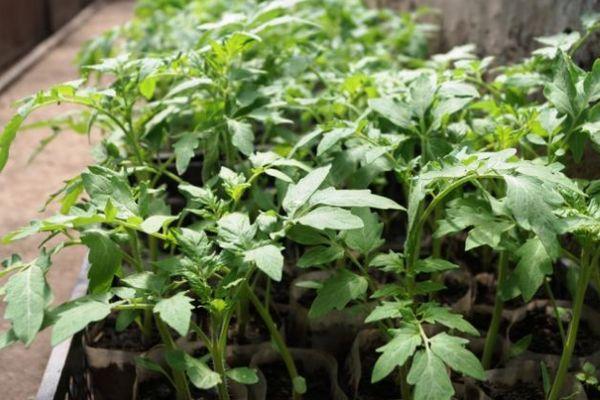

Judging by the reviews of amateurs, Volovye Heart tomatoes are not subject to long-term storage. Therefore, it is recommended to consume them as soon as possible after harvest. Not only salads are prepared from them, but also pastas, juices, mashed potatoes.
Brief characteristic of the variety
A cow's heart is often found in vegetable gardens. This tomato variety is appreciated for its large fruits with very juicy and tasty pulp. As gardeners themselves say, most often it is consumed fresh, as well as for preparing salads, although it is ideal for canning. Of course, it will not be possible to place it entirely in a jar, because some fruits reach a weight of 1 kg, and if cut into halves or quarters, it will not hold the shape. So it is best for blanks to use it as an additional component in lecho, stew, sauté, or cover juice from it (especially since one kg can get up to 700 g of this product), paste, ketchup, etc.
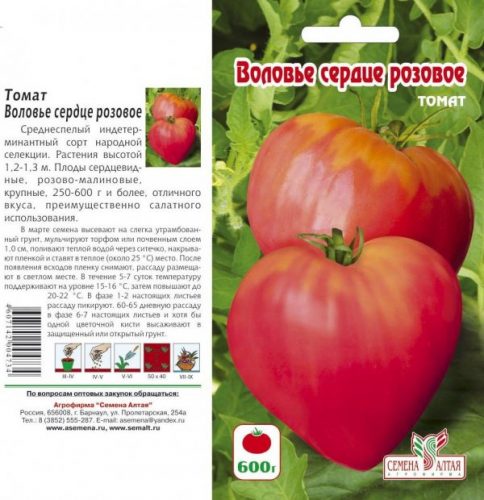

On one formed brush, up to five fruits are formed. The color of a ripe tomato is intense with a glossy shine.
Growing features
Tomatoes "Volovye Heart" belong to mid-season intederminate varieties. The place for them must be prepared in advance. Open ground and a greenhouse are also suitable. The main thing is to provide reliable backups. The height can be 120 cm or more. But it can be adjusted. If you cut off the main stem, it will turn out to grow a short plant, but then you need to be prepared for the formation of a spreading bush.
Landing should be started from the beginning of March. The principles are general. First, the seeds are processed and hardened, then they are immersed in moist soil by 2-3 cm and covered with glass or film, after the emergence of seedlings, you can no longer cover.
Read also: Grapes Super Extra: variety description, photos, reviews
As soon as 2-3 true leaves appear, the seedlings dive. Planting in open ground should be done in regions with a stable climate. This tomato variety normally adapts to environmental conditions.The main thing for him is stability, average illumination and the absence of drafts.
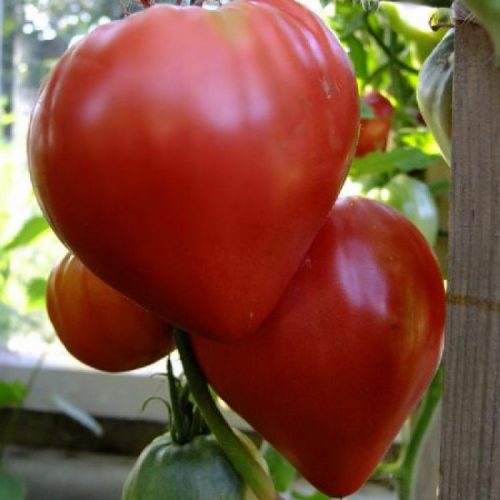

The seeds are also unpretentious to the soil, but moisture must be maintained constantly. Those who have already planted this variety are advised to mulch. So the moisture will be better preserved and it will be possible to significantly increase the yield.
2-4 sprouts are planted per kV meter. It all depends on how the bush will be formed further, emphasis will be placed on the height or width.
Many gardeners, and those who have already planted "Volovye Heart", and those who are just planning to grow it, ask how this variety differs from the "Ox Heart". There are no cardinal differences, according to the photo they can be easily confused due to the size and shape of the hearts, the description of the variety also coincides. It is believed that different names for tomatoes were given due to the registration of seeds in different countries. And this is most likely the case. There is also a variety called “Volovye Heart Minusinsk”. Why such a name? Because the registration took place in the national selection of this city.
They also say that fresh taste is the same, but the juice of the "Bull Heart" is sweeter.
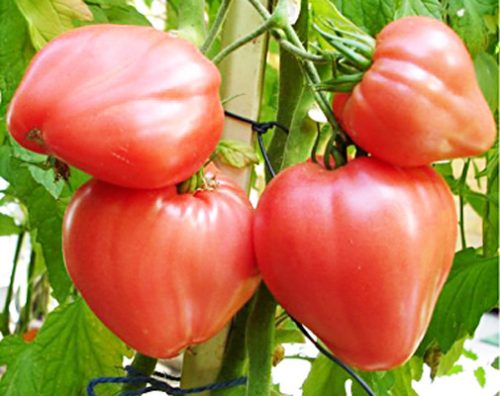

Those who like to grow not only tasty and healthy, but also beautiful vegetables are advised to try planting varieties of this variety. Looks pretty attractive "The striped cow's heart". Heart-shaped pink tomatoes are decorated with distinct longitudinal red stripes. You may also like the yellow version of this variety. By the way, very tasty juice and pasta are also obtained from it, only due to the color and softer taste, the finished product comes out more original. The fruits of the yellow "Heart" are slightly smaller, so they are quite suitable for preservation as a whole.
To give a full description of the Volovye Heart tomatoes and advice on growing it is better than anyone who has already dealt with this issue. Therefore, we will get acquainted with the reviews of gardeners.
Nikolay Semenovich
This variety was grown by my parents. There was no yellow and pink, and even more so with stripes. But bushes with red fruits always occupied at least half of the area. I like that they sing gradually. Plucked one, and the rest ripen. They seem to give way to each other. And that's enough for a long time. Delicious salads. And last year the daughter-in-law also rolled tomato juice from them. I also liked it very much.
Alevtina Viktorovna
"Bull heart" or "Volovye" what's the difference? The huge tomatoes and pulp are equally juicy and tasty. Last year I collected the seeds myself, but I will plant them next year. They say you need to give a break for a year.
I don't fertilize the soil much. I use straw for mulching, and then add freshly cut grass. I spray with serum and potassium permanganate. This helps to protect against diseases, although, in principle, this variety is quite resistant to them. And so that the pests do not eat, I plant mustard and marigolds around. They scare away with a smell.
Even beginners will be able to grow the "Volovye Heart" tomato variety, as well as prepare seeds from it on their own, by the way. If you have any questions, you can watch a video on this topic.
Tomato cow heart: reviews, photos, yield
Round, even, medium-sized tomatoes are certainly good: these are the fruits that look best in jars and look attractive on the counter. But every gardener still wants to grow the largest tomatoes on his site, because they are fragrant, juicy and very fleshy - fruits for salads and juices. It is such a large-fruited variety that the Volovye Heart tomato is.
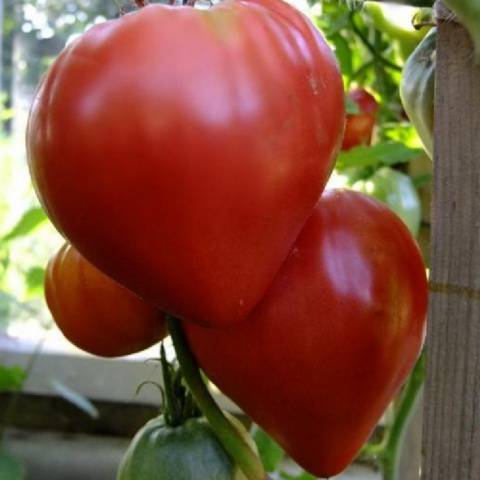

From this article, you can learn about the yield of the Volovye Heart tomato, see a photo of its fruits, read the reviews of those who planted this miracle on their site. It also contains a description of various subspecies of the Volovye Serdt variety, recommendations for growing and caring for plants.
Planting seedlings to a permanent place
In order for the seedlings to take root and grow healthy, it is important to take into account some of the rules for planting tomatoes.
Transplant timing
Planting seedlings in open ground is usually carried out in May, when stable warm weather is established.
Did you know? The tomato does not have an unambiguous belonging to the botanical group. Botanists consider it a berry, in the United States it belongs to vegetables, and in the European Union tomatoes are included in the ranks of fruits.
If the disembarkation will be carried out in a heated greenhouse, the event can be performed as early as the third decade of April.
Seat selection
It is recommended to plant tomatoes in areas where carrots, peas, radishes and onions were previously grown. Choose well-lit areas that are exposed to sunlight. Before planting, the soil is fertilized and moistened.
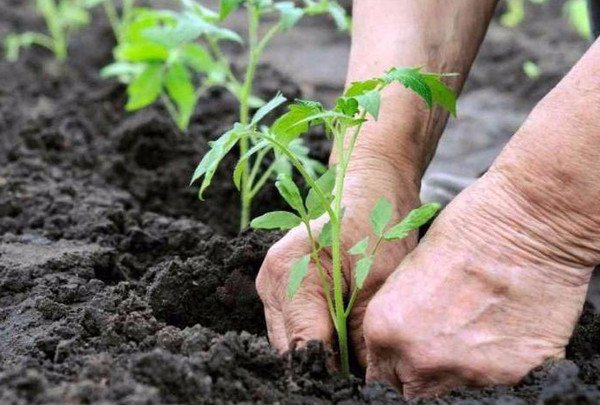

Optimal scheme
Since Volovye Heart tomatoes grow quite large, you should not plant plants close to each other. Optimal landing pattern - 50x70 cm... It is not recommended to place more than 4 bushes on 1 square meter.
More about the variety
First of all, it is worth noting that the characteristics and description of the Volovye Heart tomato variety differ from the Bull Heart tomato: these are two completely different varieties. Although the fruits of these varieties really have an external similarity and almost the same taste. The main difference between the two types is the height of the bush and the size of the fruits: after all, the Bull Heart is larger in all respects.
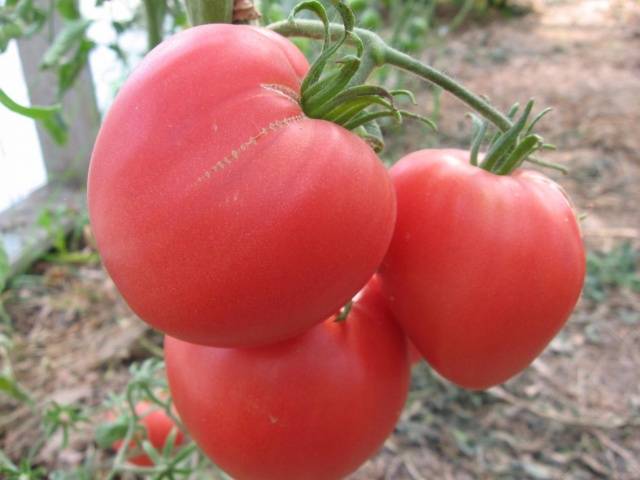

The Volovye Serdtom tomato variety was bred in Russia in 2000, at the same time it was entered in the State Register. This tomato is considered late ripening, although some breeders class it as a medium-ripening tomato. Therefore, it is recommended to grow this variety in the southern and central regions; in the North, the Heart is planted only in a greenhouse.
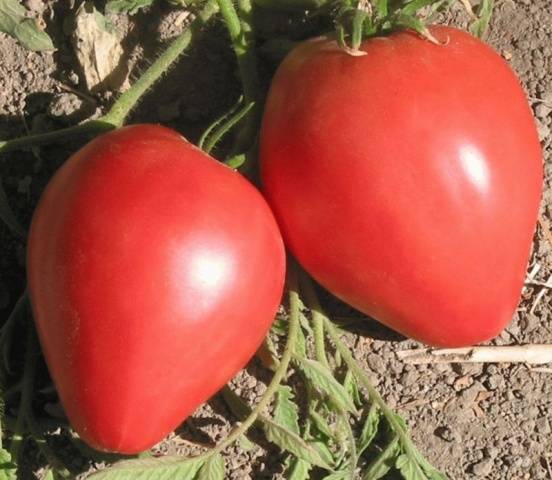

Description of the tomato variety Volovye Heart:
- bushes of an indeterminate type, their height in the greenhouse reaches two meters, in the open field - no more than 170 cm;
- tomatoes ripen in 107-118 days from the moment of germination;
- there are not very many leaves on the bushes, they are of medium size, normal shape;
- the yield of tomatoes in the open field is not very high - up to 7 kg per square meter, in a greenhouse it is realistic to raise this figure to 11 kg;
- the Volovye Serdt variety has a complex resistance to "tomato" diseases, including late blight;
- the tomato responds well to fertilization and regular watering;
- the first flower ovary is usually located above the seventh leaf;
- up to five tomatoes can form in each brush;
- the average fruit weight is 350 grams;
- the lower tomatoes reach 800-1000 grams, the upper ones are smaller - 250-150 grams;
- the shape of the fruit resembles a heart - an elongated ribbed oval;
- the color of the tomatoes is raspberry red;
- the pulp is sugary on a break, tasty, very sweet, aromatic;
- tomatoes are suitable for transportation, since they have a dense peel, their pulp contains a lot of dry substances;
- the harvested crop will not be stored for long, so you need to quickly realize the fruits;
- the root system of this variety is very powerful - the length of the central horse can reach a meter, the lateral roots often branch out 2-2.5 meters from the middle of the bush.
Read also: Barberry Thunberg Atropurpurea - variety description, photos, reviews
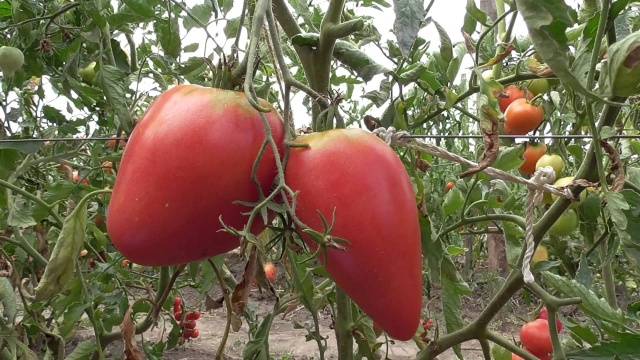

The Volovye Heart variety is considered a salad variety, that is, it is best to eat fresh tomatoes. These tomatoes make delicious purees, pastes and juices. 700 ml of tomato juice comes out of one kilogram of fruit. In general, it will not work to preserve the Volovye Heart tomato, since its size is quite large. But in pickled salads and appetizers, the tomato looks great.
Pros and cons
The Volovye Heart variety is rather ambiguous: the opinions and reviews of gardeners about this tomato are the most controversial. Therefore, it is worth highlighting the strengths and weaknesses of the Heart.
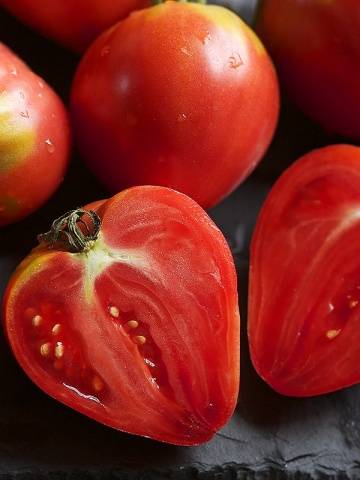

Among the advantages are:
- the impressive size of the fruits;
- high-end tomato appearance;
- great taste of tomatoes;
- good yield (with sufficient care);
- medium resistance to diseases (which is very important for a late-ripening variety).
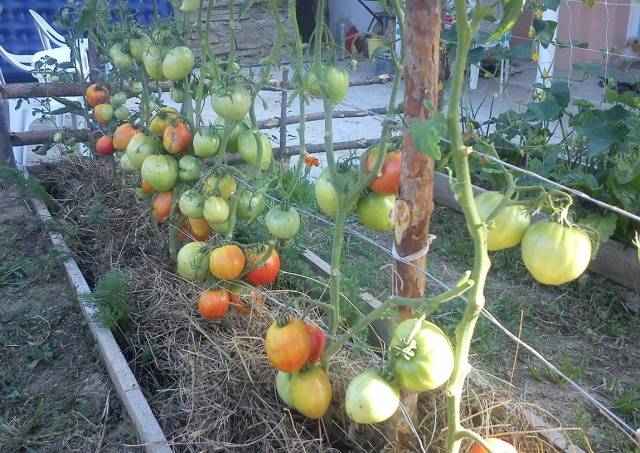

There are also cons of a heart-shaped tomato:
- plants need constant and competent care;
- the variety has a long growing season, which is not suitable for all climates;
- for the Ox Heart, the temperature regime is very important - the tomato does not like fluctuations from heat to cold;
- it will not be possible to preserve the crop for a long time - the fruits quickly deteriorate.
Variety subspecies
Of course, the tomato in question cannot boast as many varieties as its counterpart, the Bull Heart variety (there are pink, striped, and black-fruited tomatoes and many other species). But the Volovy Heart also has a couple of popular varieties:
Tomato Minusinskoe Volovye Heart
Bred by folk breeders. It differs from its predecessor in earlier ripening periods (mid-ripening variety), a slightly reduced fruit weight (ranges from 200 to 400 grams are indicated), and a small number of seeds inside the tomatoes. It is recommended to grow this variety in two or three stems.
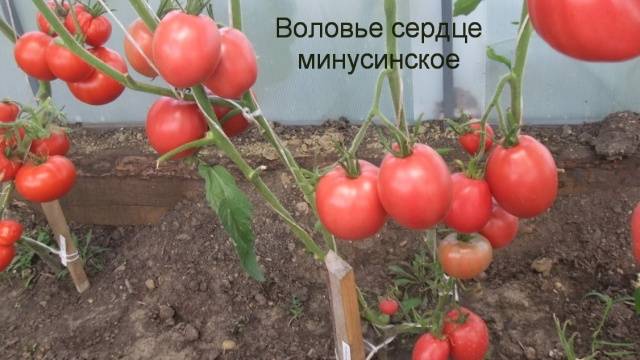

Cow's Heart Striped
It is easy to recognize by the appearance of the fruit: the tomatoes are golden-pink, yellow-green stripes are clearly visible on the peel. Tomatoes are smaller than those of the predecessor variety - 150-200 grams, but they are very sweet and tasty. It is recommended to grow this subspecies in greenhouses. The ripening period is average, the bushes are not so high (up to 130 cm).
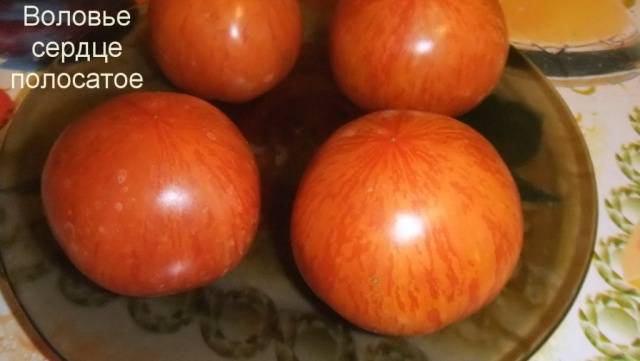

Reviews of gardeners who planted the variety
She grew a cow's heart in a greenhouse. Seeds were sown in early March. The bushes are over 1.5 meters high. The fruits were weighed only from the first harvest, the average weight was 500-600 grams, the rest were two times smaller. The tomatoes were raspberry red, fleshy and delicious. The tomatics did not hurt; for prophylaxis, they treated the bushes with biological products.
She grew the variety Volovye Heart from Serbian seeds. They grew up in the garden. The bushes were powerful, I had up to 500 grams of tomatoes, but the planting was also late. The brushes did not form, but only 1-2 fruits were set on each brush, maybe this is due to the hot weather, but the bush also healed, through my fault. The tomatoes were delicious, so I will grow more.
The Volovye Heart variety actually does very well in our climate. The bush was low-leafed, but not frail, it stretched up to 2 m in height. Four tomatoes were tied on the first brush, then it was empty and three tomatoes were tied on the third brush. Beautiful heart-shaped fruits, very tender and tasty pulp, thin skin. Fleshy tomatoes, seed chambers are not large, few seeds. Not insipid, sour, fragrant. I liked it, I will still grow it.
I liked the variety. Everything I love - the bush was tall, the yield was very good, the fruits were beautiful and tasty. They did not crack. Grown in a greenhouse.
Alla, Nizhny Novgorod
Grown from Croatian seeds last year. Tomatoes were on average 250-400 grams. But on the first brushes there were also some very large ones. Good grade. Like all cardiac low-leafed. Meaty and juicy at the same time. Sweet with a little bit of acidity.
Growing rules
To harvest a good harvest of large and beautiful fruits, the gardener will have to work hard - Volovye Heart loves attention and care. In principle, like most large-fruited late-ripening tomatoes, this tomato prefers well-warmed light soil with a sufficient content of trace elements. Do not forget about the indeterminacy of the bush - the tomato will have to be shaped, regularly pinched and controlled the number of ovaries.
For those who decide to have this tomato variety in their garden, it is recommended to do the following:
- Find strong and healthy seedlings on sale or grow yourself. Seeds for seedlings are sown in March - the exact dates depend on the climate in the region and on where the tomatoes will be grown (soil or greenhouse).It is necessary to calculate the planting so that by the time the plants are transferred to a permanent place, they will be from 55 to 65 days.
- First, the seeds can be sown in a common container with small sides. When the tomato has a pair of leaves, they are planted in individual pots.
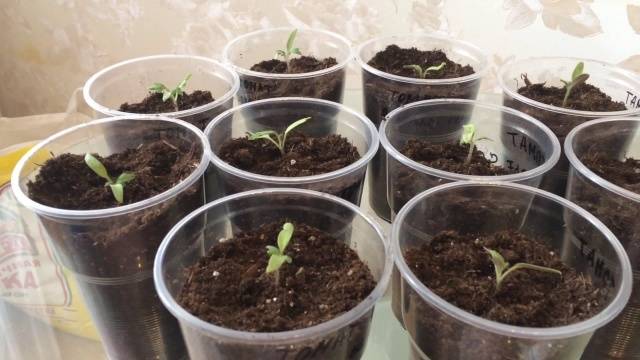

- Before transplanting into the ground, the plants are hardened by taking them out into the street or onto a balcony with open windows.
- Like all indeterminants, the Heart takes up a lot of space in the greenhouse and in the garden. To ensure freedom for the bushes, seedlings are planted according to the 50x70 scheme. Do not bury the roots of tomatoes deeper than 20 cm - they do not like the cold. The soil temperature at this depth should be more than eight degrees.
- Immediately you need to take care of the supports for the tomato. Trellises are most suitable, but you can also build supports from wooden pegs.
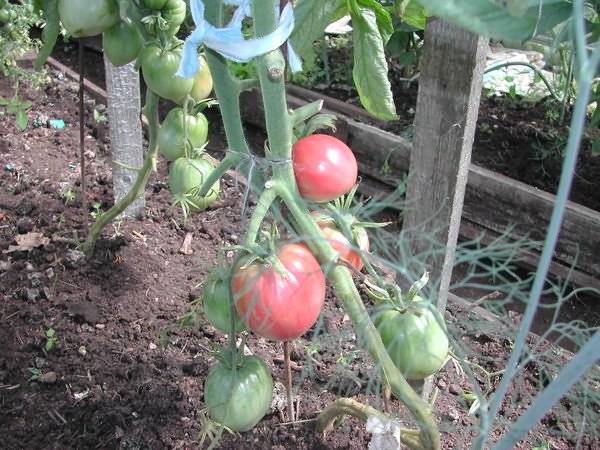

- It is recommended to form a bush in one or two stems. The second stem is released from the stepson, which is located just above the first ovary.
- All other stepsons should be removed regularly. Excess ovaries also need to be cut off - there should be no more than 6-8 fruit brushes on one bush. If you do not thin out the brushes, tomatoes will grow small and tasteless.
- You need to feed tomatoes 3-4 times over the summer. For these purposes, mineral and organic fertilizers are used. Potassium-phosphorus compositions work well, a small amount of nitrogenous dressings is permissible.
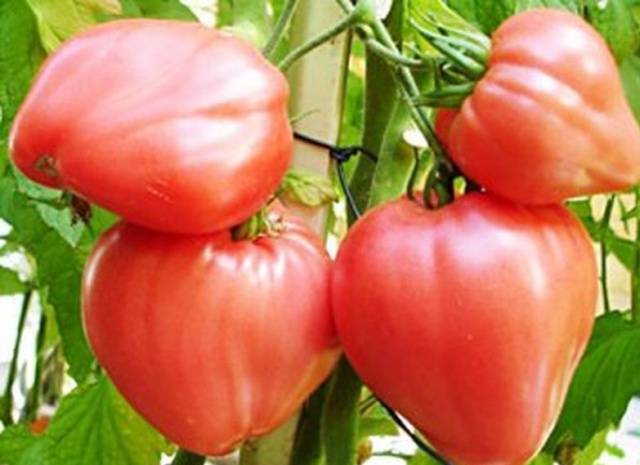

- Water the Heart often and abundantly (every three days) - this tomato loves water. In order not to put the bushes at risk of infection, water is used warm, the soil is mulched, and the lower leaves of tomatoes are cut off to improve air circulation.
- Although the variety is considered resistant, the bushes still need to be processed in order to prevent diseases. If there are no visible signs of infection, Bordeaux liquid or any chemical agent is used. You need to process the bushes before they start flowering.
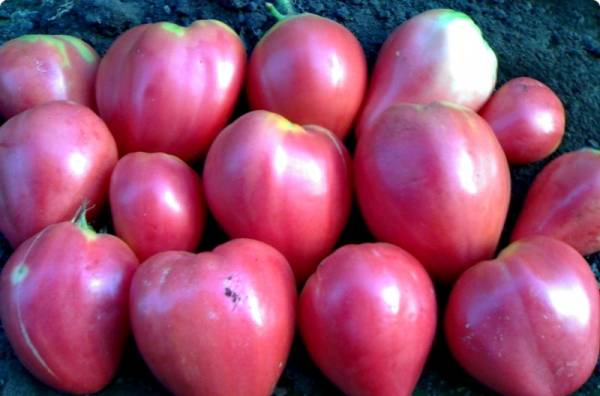

Diseases and pests
If the tomato does not look good, then the symptoms can be used to determine whether this is a disease or some kind of parasite:
- If you begin to notice yellowed leaves on the trunks
The yellow leaves are cut on the main stem. It is believed that the main reason for this may be a lack of moisture for the root system. The planted seedlings should be watered into the hole, and not poured onto the surface of the earth after hilling. This method of watering forms the growth of the root upward (as it is drawn to moisture). Weak shoots close to the surface of the ground dry out quickly, which leads to yellowing of the leaves.
Experienced growers recommend:
- When planting plants in the ground next to the hole (at a distance of 20 cm), deepen plastic bottles with holes made in them.
- If watering is done in these containers, the water will be distributed at the required depth at the root level. Which is clearly beneficial for plants.
- If the leaves began to curl
Tomato bushes should not be sprayed with water. Moisture on the leaves under the scorching sun, as a conductor of heat. The drops become hot and damage the leaves.
In the seed market for agronomists, there is a large selection of tomatoes for planting and growing. And everyone chooses what he likes best. But, if you want to enjoy juicy, large and aromatic tomatoes from your own garden, then this variety is exactly what you were looking for.

